Erg Chebbi, Morocco
Dunes, Dust & A Dacia. Driving To The Rolling Sand Dunes Of The Moroccan Sahara
On the dunes of Erg Chebbi, southeastern Morocco. May 19, 2014
Early on Sunday morning (today is Tuesday) I found myself sitting opposite Mohammad in a small Location de Voiture (car hire) office in Er Rachidia, southeastern Morocco. Finding such a place was a chore but, & as it turned out, that was the easy part. I wanted to hire a car & Mohammad wanted me to hire a car so it was never not going to happen; we just had to clarify the details first. Mohammad didn’t have a word of English & it was obvious from the outset that my rudimentary French was always going to fall well short when tasked with ironing out the intricacies of a Moroccan car rental agreement. At one stage I resorted to mimicking a driving motion (rocking hands at the 10-2 position etc.) while motioning a crash and using the word ‘accident’, a word Mohammad understood all too well (it’s the same in French). He was looking at me rather worryingly when I attempted to ask,
“Accident. OK. No problem, right?”
Mohammed glared at me & leaned forward putting his elbows on this desk before quietly replying,
“Accident. Big problem.”
Of course Mohammad was right, an accident would be a big problem. What I was trying to discern was whether insurance was included in the hire rate (yes I know, it was a piss-poor effort). We eventually ironed out that and other details. Insurance was included in the price which, at 1,200 dirhams (€110) for 3 days, was more than I expected to pay but was still happy to do so. Shortly thereafter I was starting out on the 120 kilometre journey south from Er Rachidia (![]() ) to the Erg Chebbi sands of the Moroccan Sahara with an assurance to Mohammad that I’d have the car back in one piece in three days’ time.
) to the Erg Chebbi sands of the Moroccan Sahara with an assurance to Mohammad that I’d have the car back in one piece in three days’ time.
Car hire sorted. Just about to drive to the #desert in #morocco #travel #TravelPhotography #dmbtravel #merzouga
— davidMbyrne.com (@ByrneDavidM) May 18, 2014
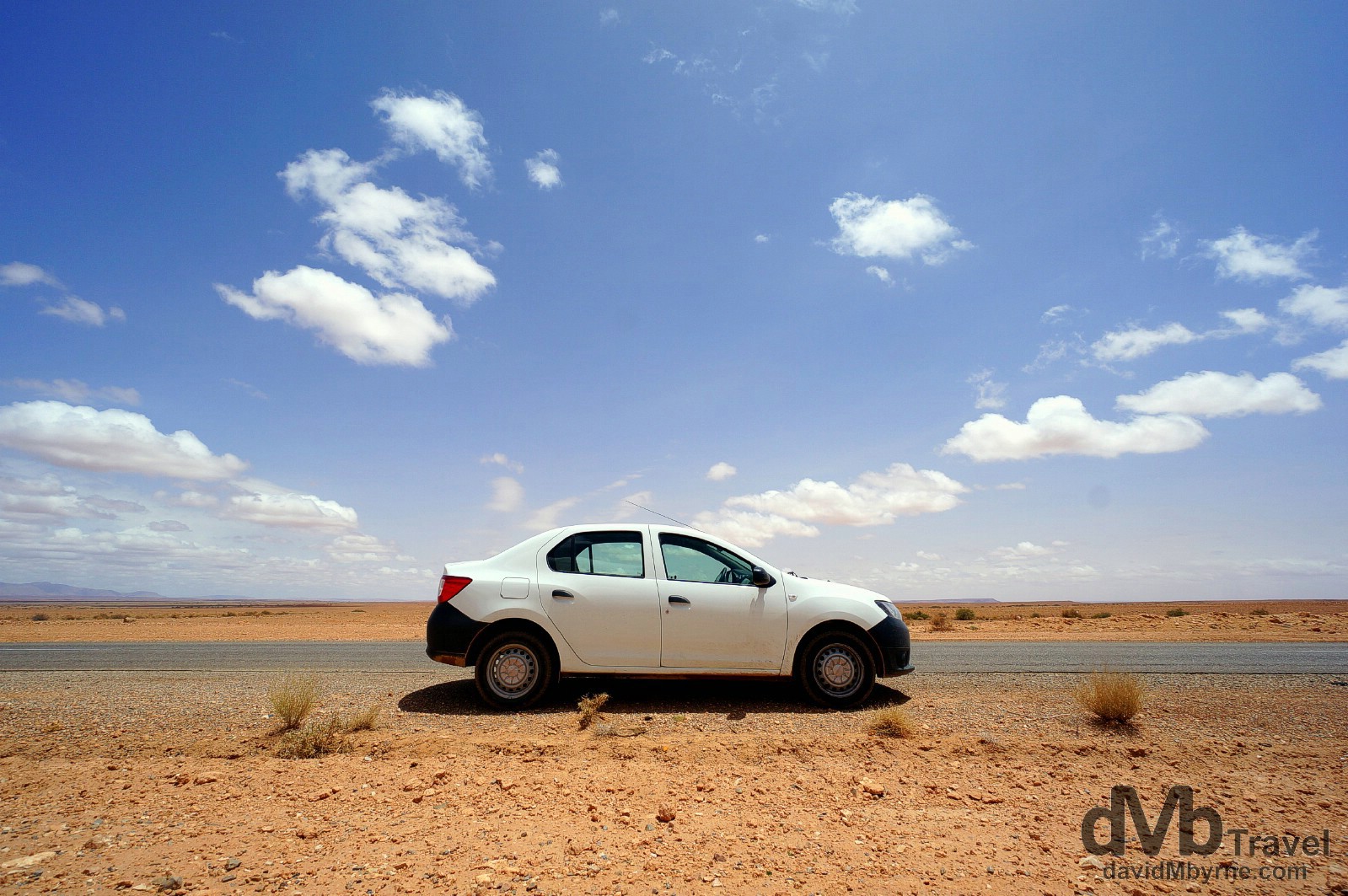
My ride to & from the Moroccan dunes. A white, radio, air-con & power steering-less, windy-up windows Dacia Logan – the Romanian Dacia, these days owned by French Renault, is easily the most common car brand plying Moroccan roads. This beast has 3,061 kilometres on the clock, lots of dust on the dash & a few dints on the bodywork. I could have easily taken the bus to & from the desert but where’s the fun in that? Even a no-frills Dacia is a much better option. By the side of the the N13 outside Er Rachidia, southeastern Morocco. May 18, 2014.
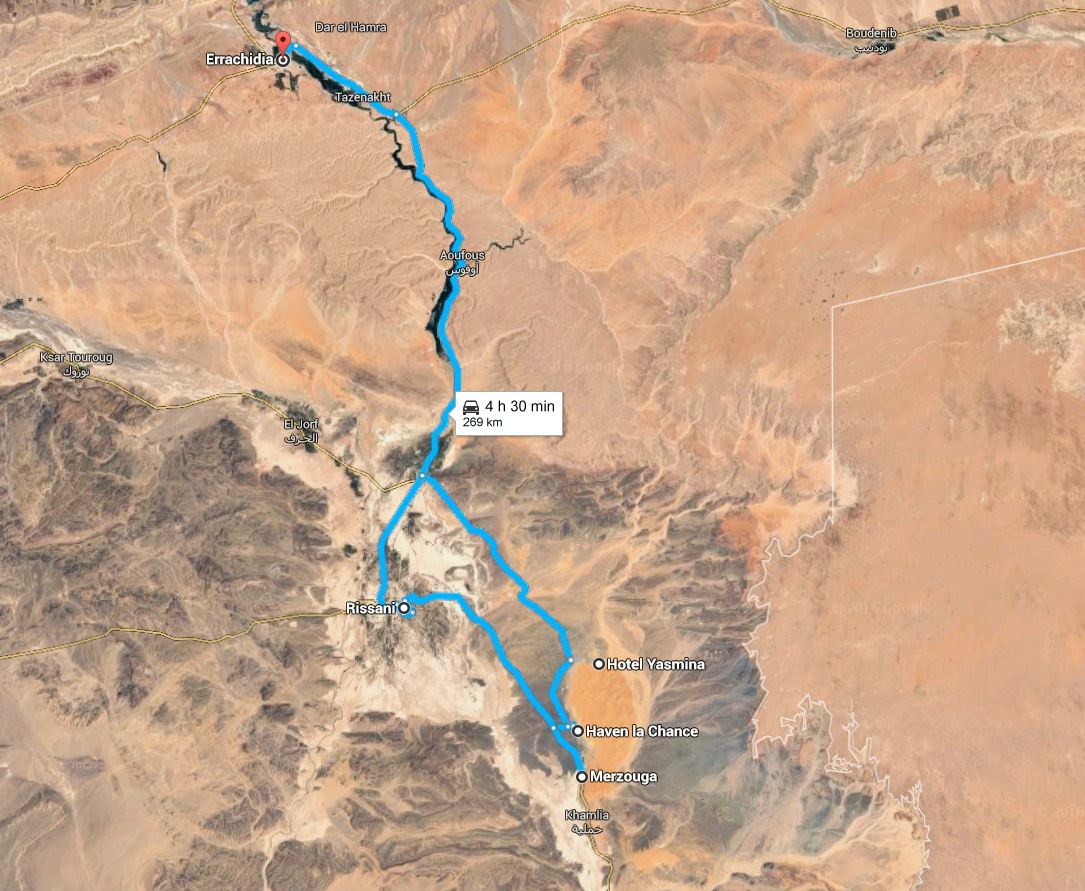
Road Trip. The N13 from Er Rachidia to Merzouga (with return via Rissani & the Circuit Touristique), southeastern morocco.
Palmeries & The Southern Oases
This region of Morocco, the pre-Sahara, is not sand for the most part – more a wasteland of rock and scrub, which the Berbers call hammada. Wasteland it may be but it is still a powerfully impressive landscape. About one hour out of Er Rachidia I got my first glimpse of one of the region’s lush belts of date-palm oases, long ribbons of deep-green palmeries resting in vast southern river valleys and seemingly stretching out towards the Sahara itself.
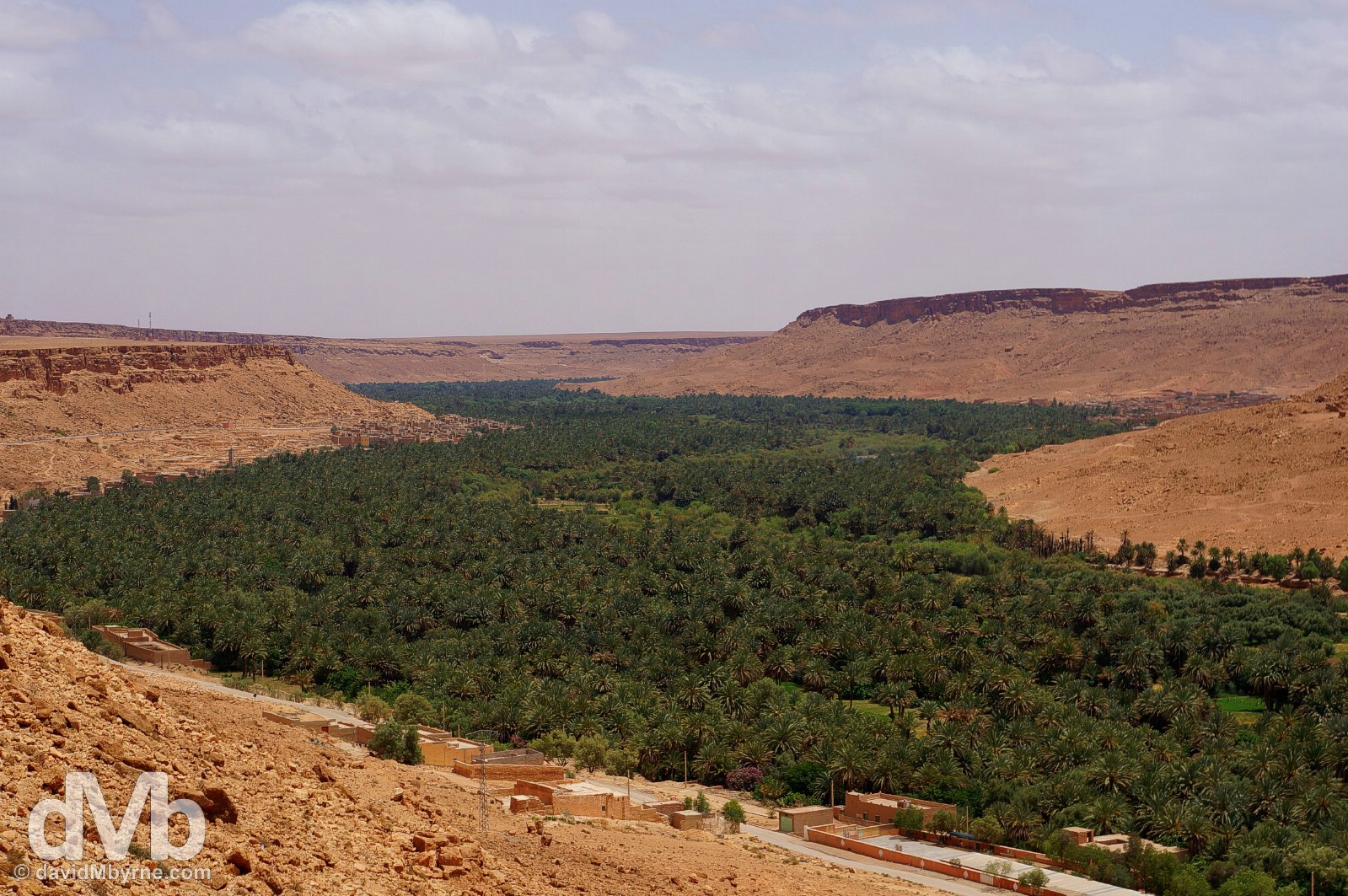
A vast palmarie resting in a lush river valley, the only areas of this landscape showing any signs of life, as seen from a lookout on the N13 between Er Rachidia and Merzouga, southeastern Morocco. May 18, 2014.
– The Rough Guide to Morocco
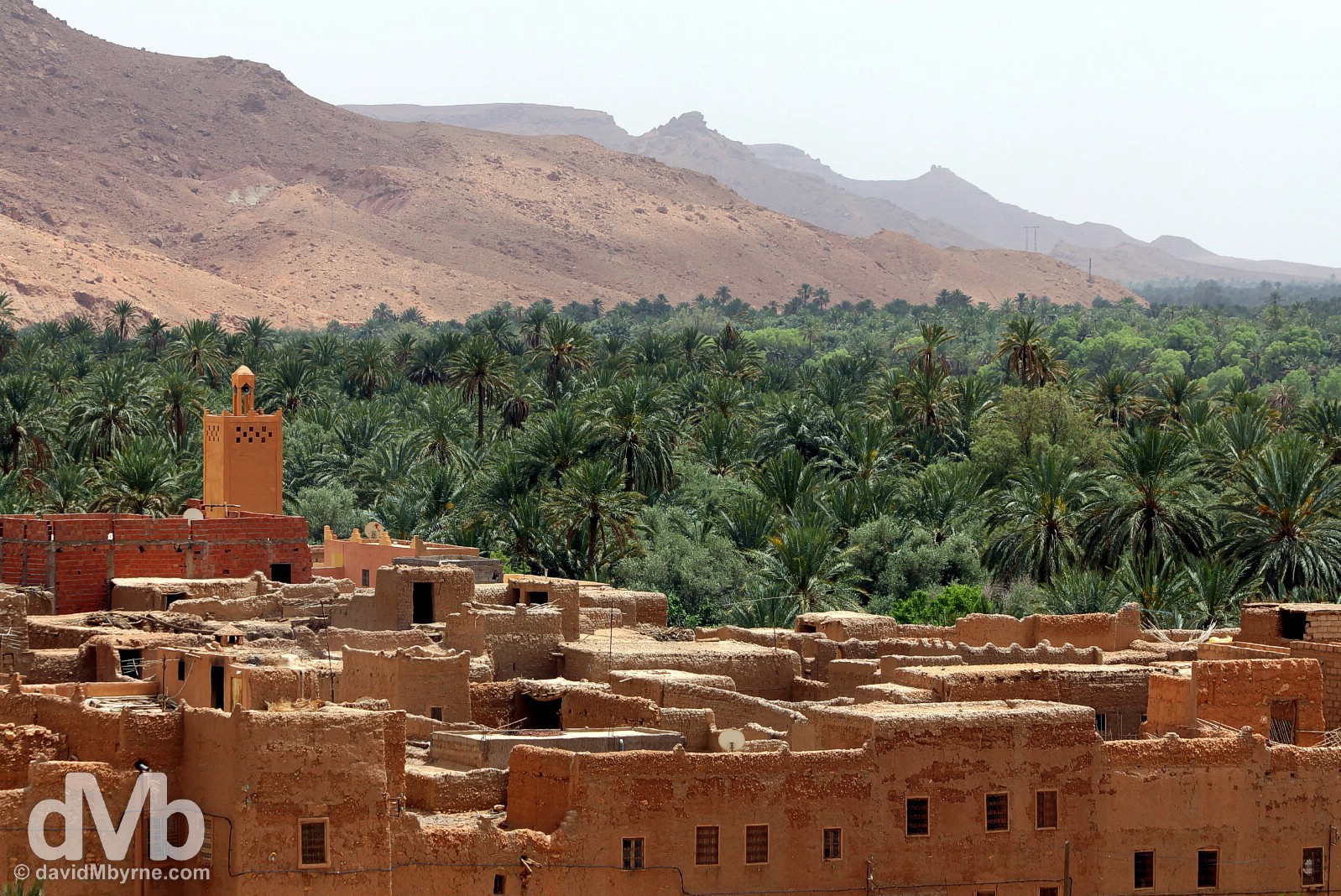
A section of a crumbling mud-built village in a palmerie off the N13 between Er Rachidia and Merzouga, southeastern Morocco. May 18, 2014.
– The Rough Guide to Morocco
Continuing south on the R13 and rolling through crumbling mud-brick villages and past valley oases, I eventually arrived at the dunes I’d initially set out to visit. Unfortunately the conditions weren’t great.
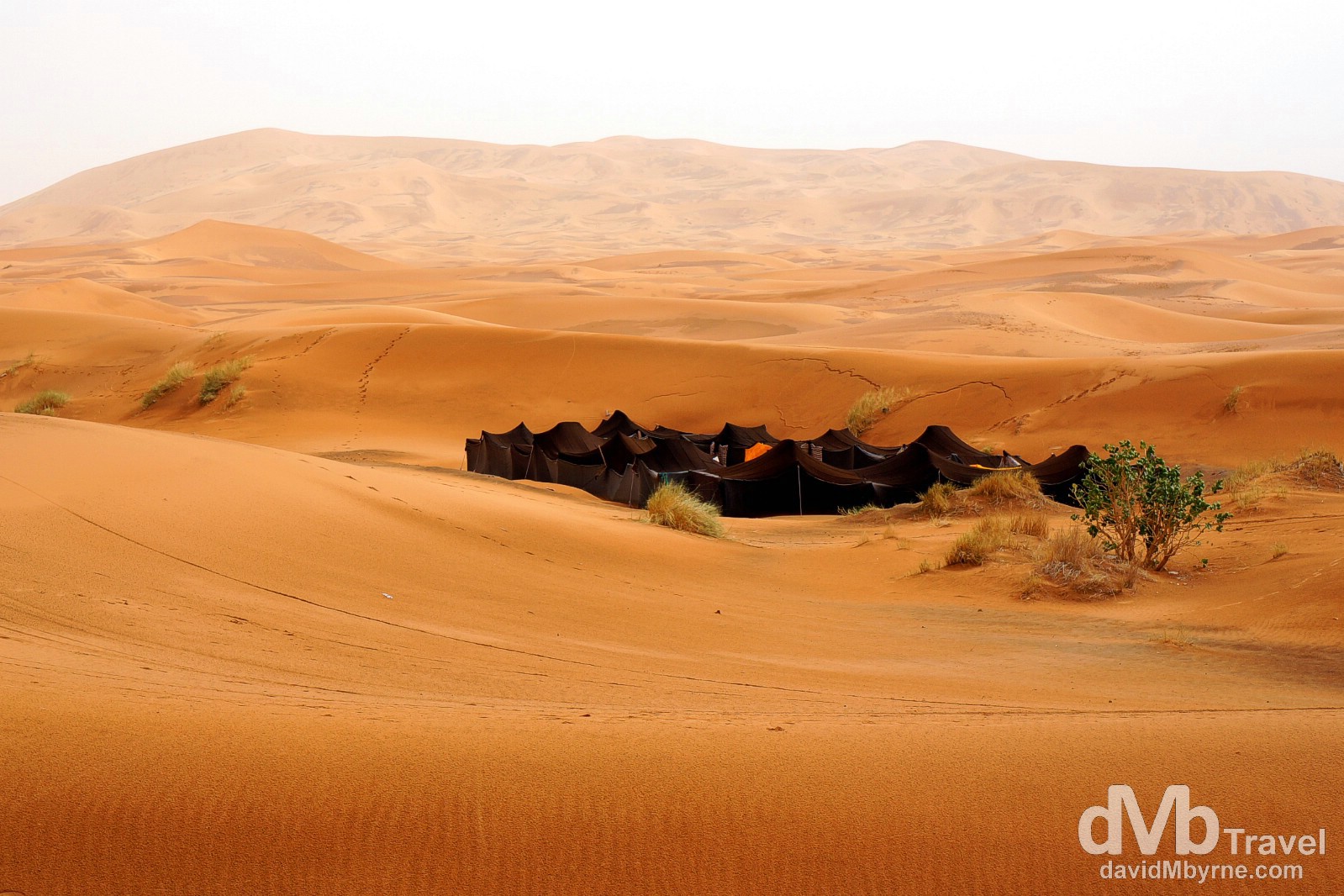
My first glimpse of the Moroccan Sahara sand dunes at Erg Chebbi (![]() ). Damp Berber tents in the (even damper) desert as seen from the veranda of the Auberge Kasbah Yasmina at the northern end of the Erg Chebbi dunes, southwestern Morocco. May 18, 2014.
). Damp Berber tents in the (even damper) desert as seen from the veranda of the Auberge Kasbah Yasmina at the northern end of the Erg Chebbi dunes, southwestern Morocco. May 18, 2014.
Erg Chebbi || The Moroccan Sahara
Erg Chebbi (‘erg’ meaning sand dune), not too far from the (closed since 1994) border with Algeria, are Morocco’s most impressive dunes & one of the country’s biggest draws. They are small – only some 30 kilometres north to south and 7 kilometres wide at their widest point – and although not as imposing or as expansive as dunes found elsewhere in North Africa east of here, they still give an impressive taste of the Sahara’s grandeur. Hotels/resorts line the edge of the dunes, some of them a bumpy 15 kilometre detour off the main R13 via an unpaved desert road, no problem for a Dacia Logan. Various levels of comfort are on offer, from simple canvas tents, that see you sleeping beneath the twinkling Saharan stars, to luxurious Berber pavilions complete with soft beds, rugged floors and handcrafted furniture. All offer both easy access to & super views of the sand, the region’s star attraction.
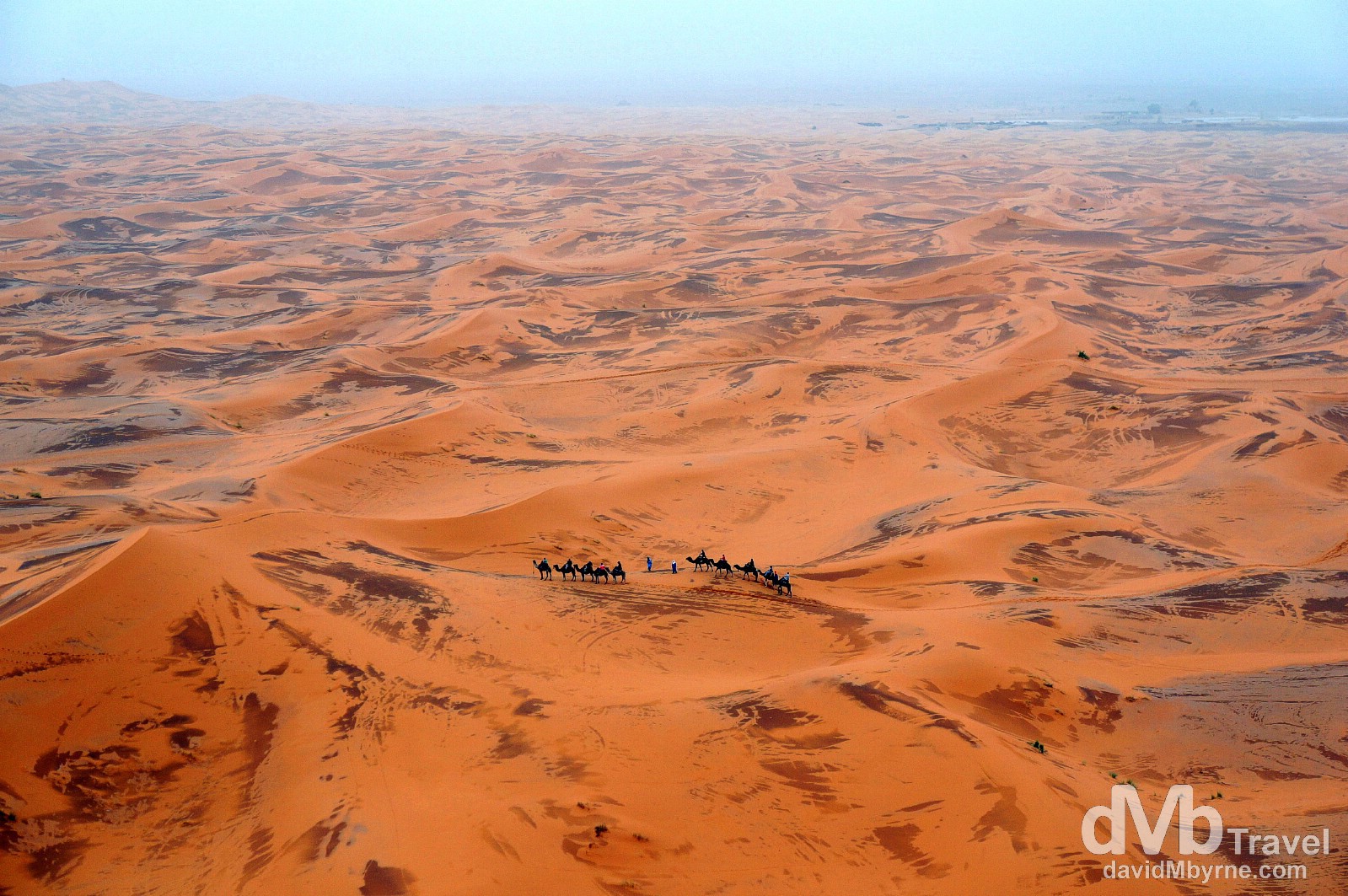
An evening camel train on a section of the Erg Chebbi dunes as seen from on high. Northern Erg Chebbi, southeastern Morocco. May 18, 2014. || Camel trips across the Erg Chebbi landscape are de rigueur & not particularly cheap. I’ve done enough dromedary riding in my time to know that a trip aboard the Ship of the Desert isn’t a particularly enjoyable one – I like camels & their deliberate ways but I’d much rather explore the dunes under my own steam. This day, day 1 in the desert, was a wet day. It hadn’t rained en route & it wasn’t raining when I arrived at the dunes after the drive from Er Rachidia but it had rained recently, a rarity I was told. The desert was damp & the sands compacted to a rusty red colour, reminding me of the sands in Wadi Rum, Jordan. The mugginess and dampness aside, it was beautiful. Nearing sunset I struck out, all Laurence of Arabia like, onto the rolling dunes & headed for the highest of them in the far distance. It took a while to get there but once I did I sat surveying the landscape below me. The conditions meant the visibility was poor – a bit of a desert disappointment – but the vistas were still memorable.
Desert Day 2
I rose early, up for sunrise. Conditions had much improved. The moon was lingering, slowly giving way to the rising sun. The red desert sands were fetching.
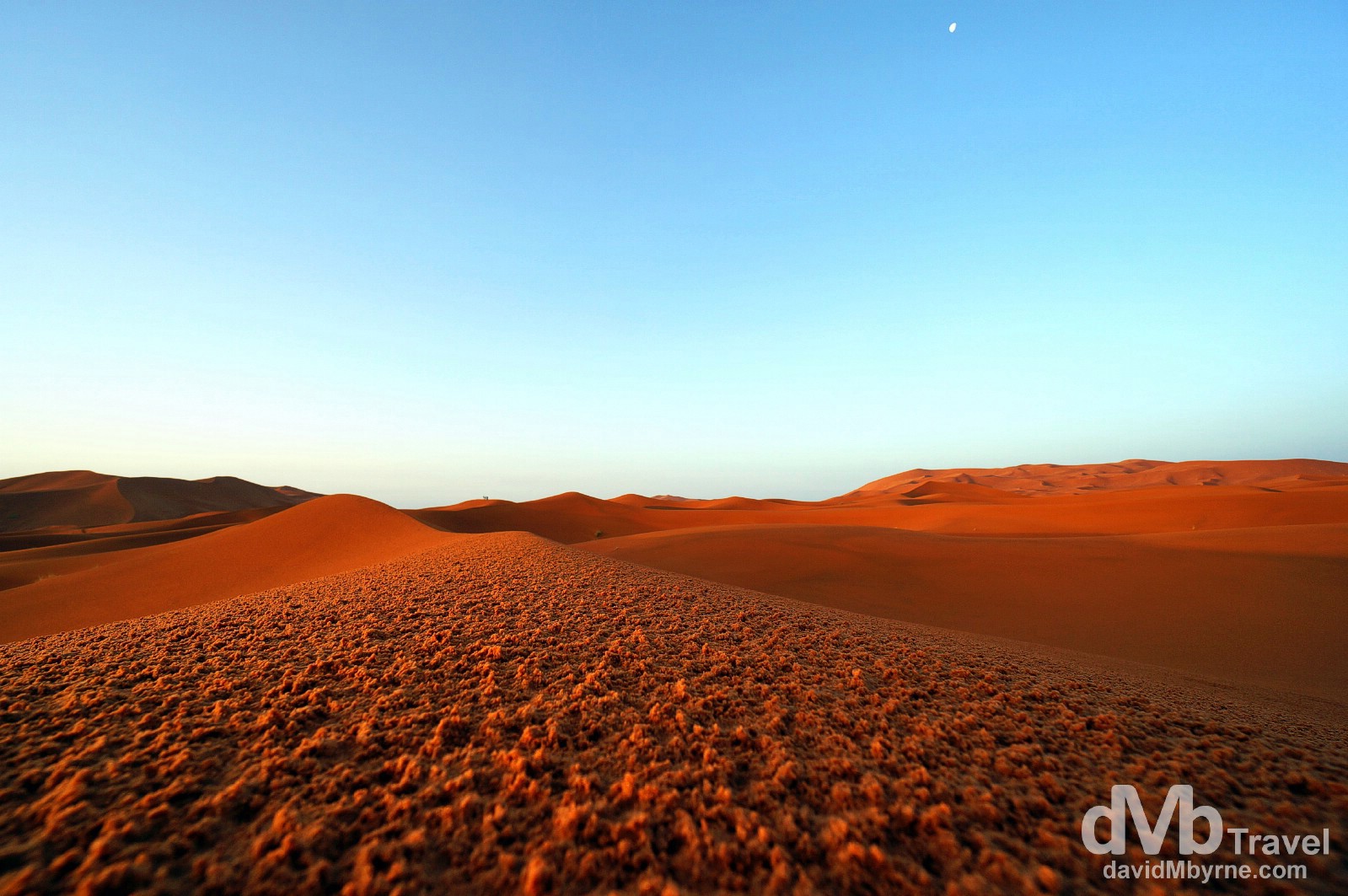
The moon is still in the sky as the sun rises over the red sands of the northern Erg Chebbi sand dunes in southeastern Morocco. May 19, 2014.
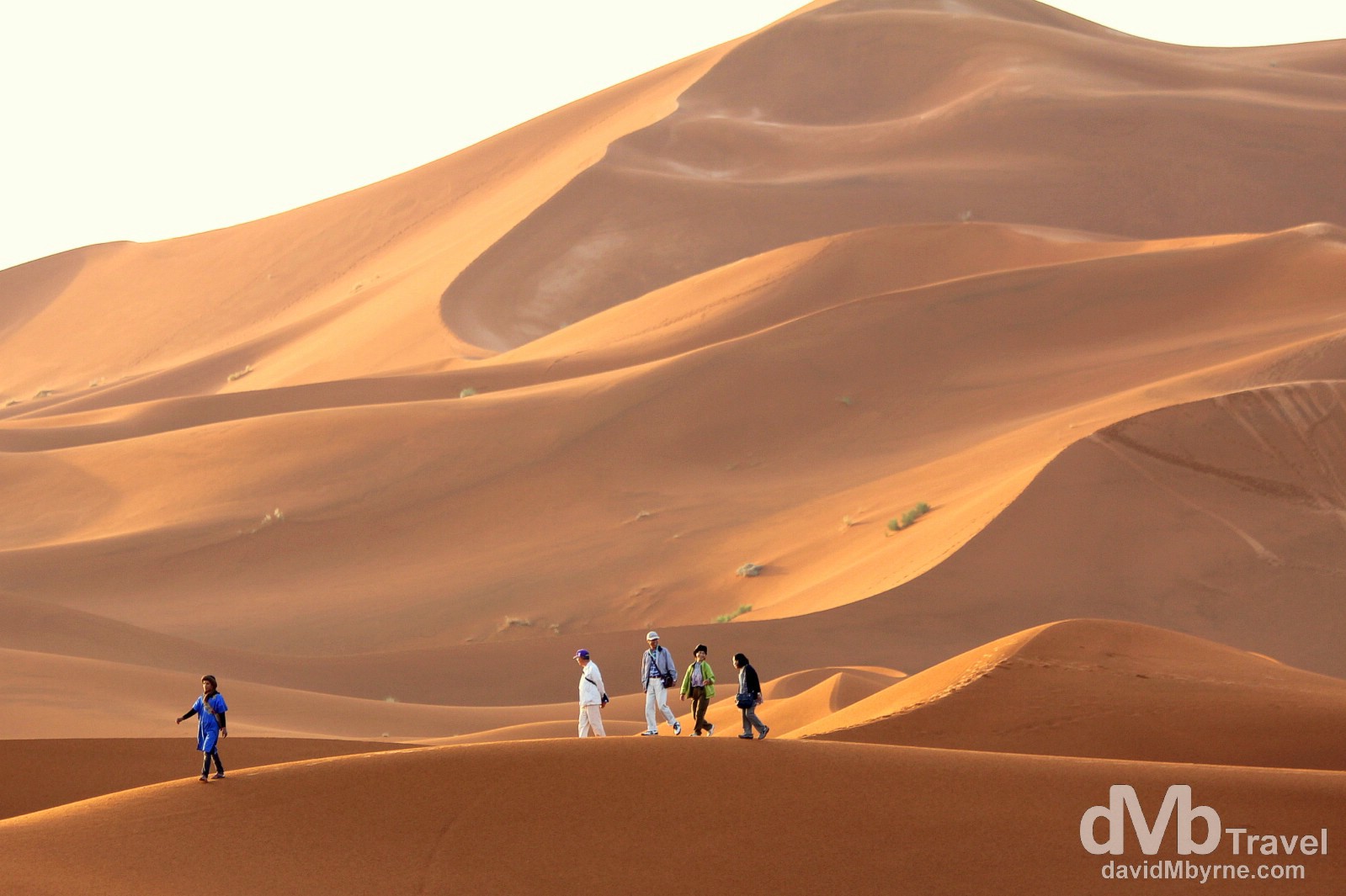
The sands look a lighter shade of red with the sun rising to the left of this picture – the landscape colour changes depending on the time of day and environmental conditions but I’d imagine the scene, when visible, is never less than strikingly beautiful. An early morning stroll among the massive sand dunes of northern Erg Chebbi in southeastern Morocco. May 19, 2014.
Reflections in the desert. Well I never.
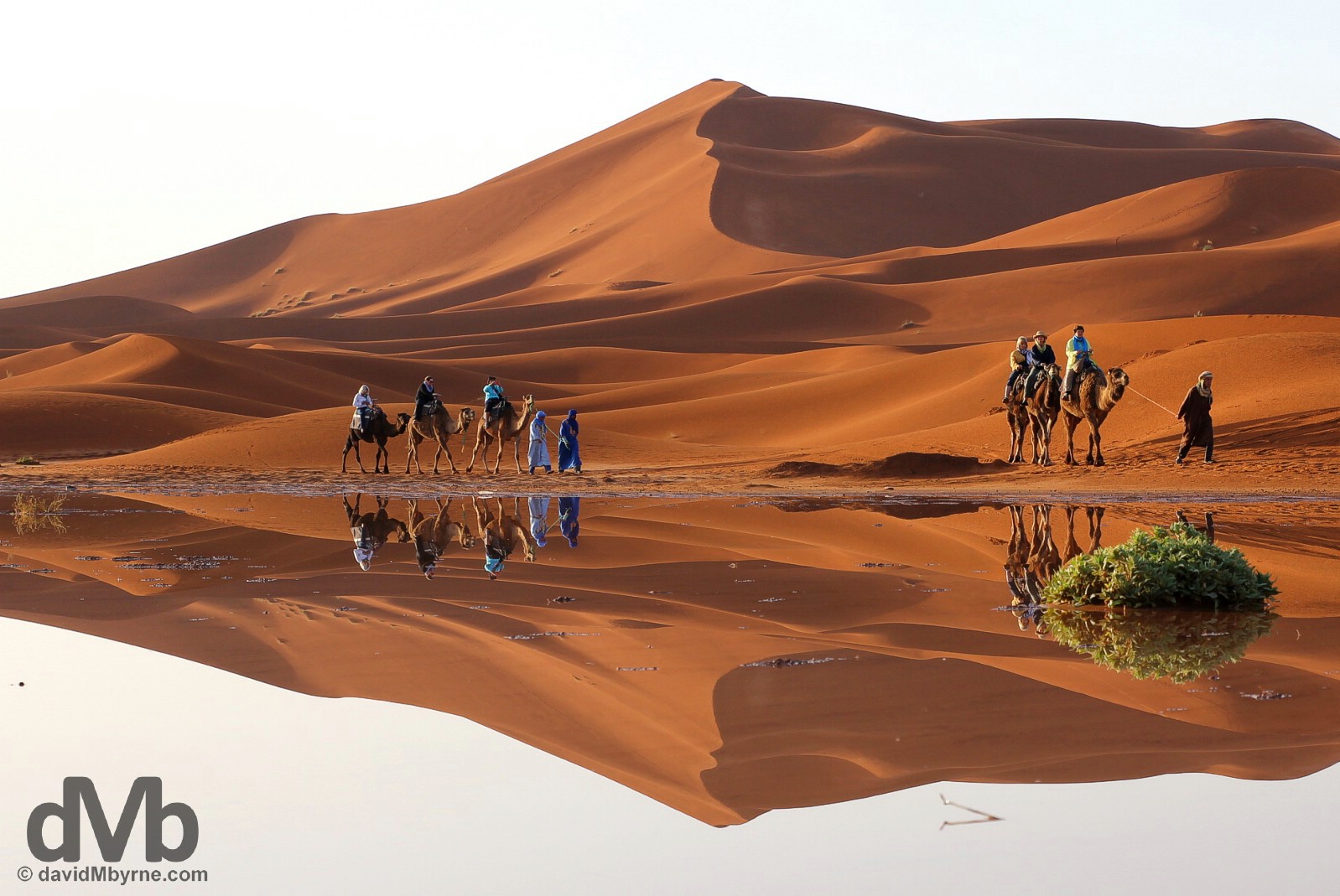
Although mostly parched, the recent rains added to the level of a small lake situated beside my hotel. I had to wade out into thick, almost quicksand-like muck to get this picture. And once I had put myself in that precarious position to photograph the dune reflections the two (small) camel trains seen here decided to saunter by. I wasn’t too bothered about that little incursion. A sunrise camel train reflection among the dunes of northern Erg Chebbi, southeastern Morocco. May 19, 2014.
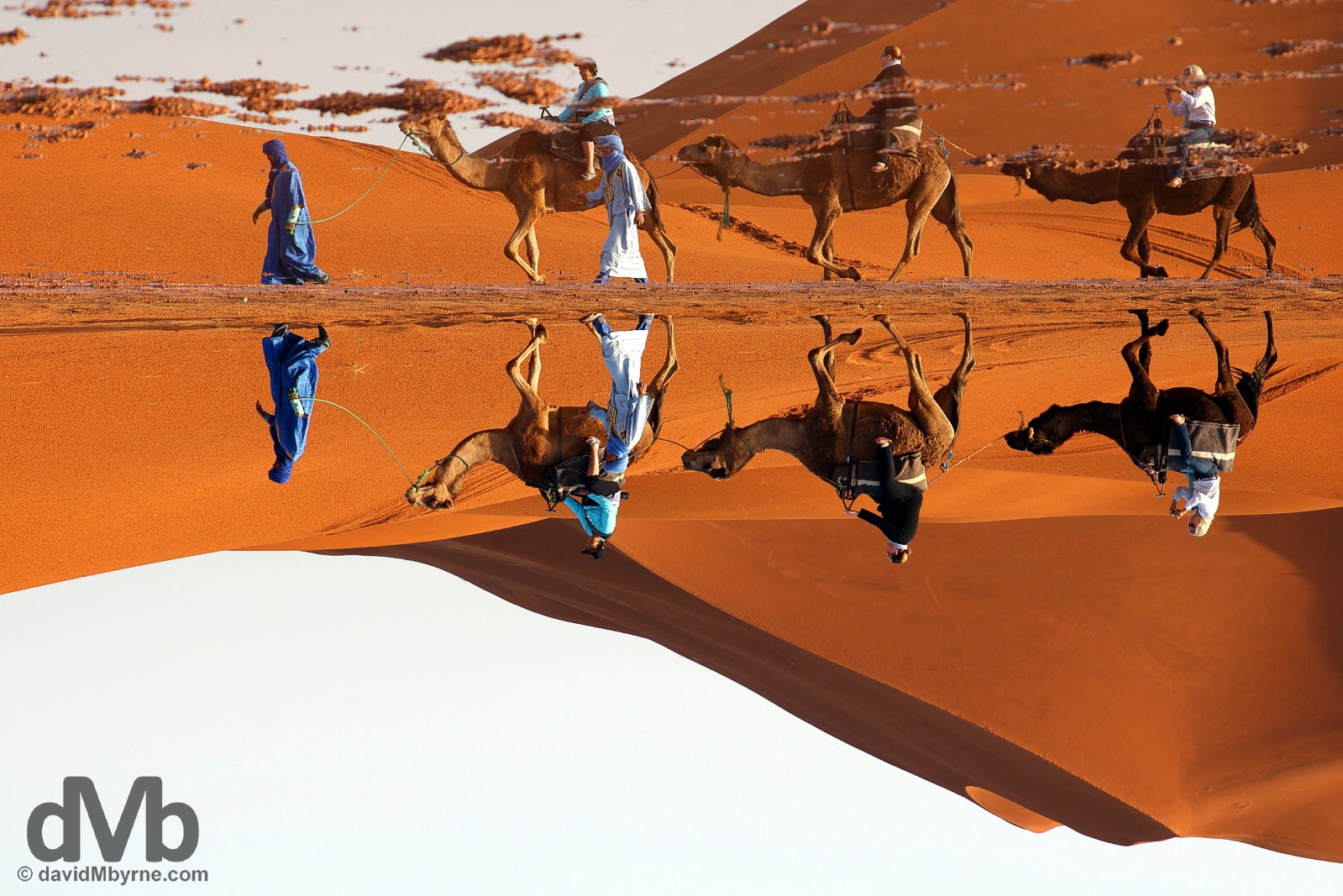
One can always have fun with reflections. An inverted camel train reflection among the desert dunes of northern Erg Chebbi, southeastern Morocco. May 19, 2014.
Down South || Merzouga
After one night up north I hopped back in my Dacia Logan & headed further south to my present location by the dunes just outside the village of Merzouga. It didn’t take long to get here. After all, the dunes only stretch some 30 kilometres north to south.
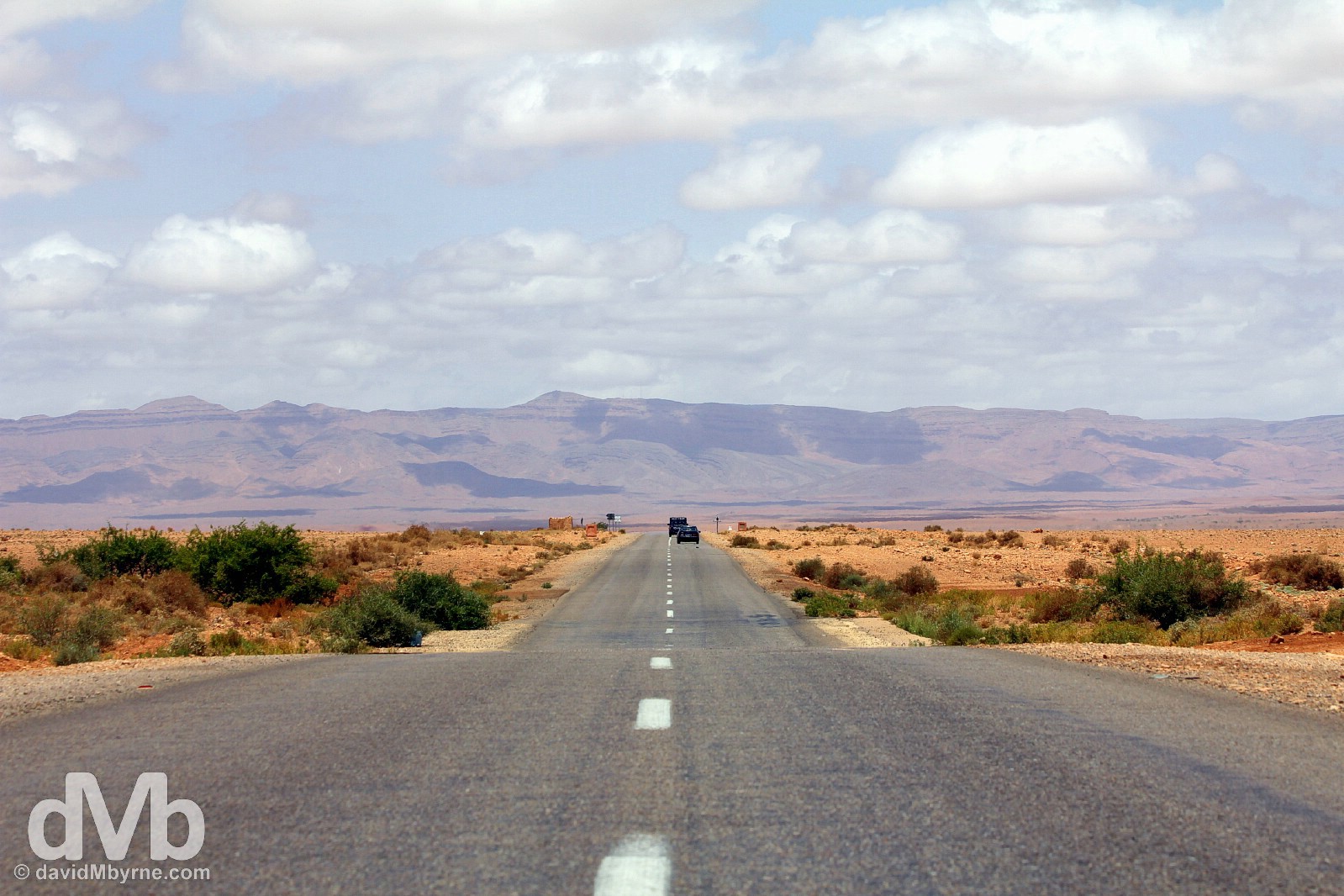
Road trip. The N13 between Er Rachidia and Merzouga, southeastern Morocco. May 19, 2014.
Although geographically close, the sands down south were very different to what I experienced up north – the southern Erg Chebbi sands are more like the golden sand one might associate with true desert. Shortly after finding a base for the next few nights, a gorgeous room again situated right on the edge of the dunes, I was out among all that golden goodness, not to mention up to my old tricks with my sunglasses.
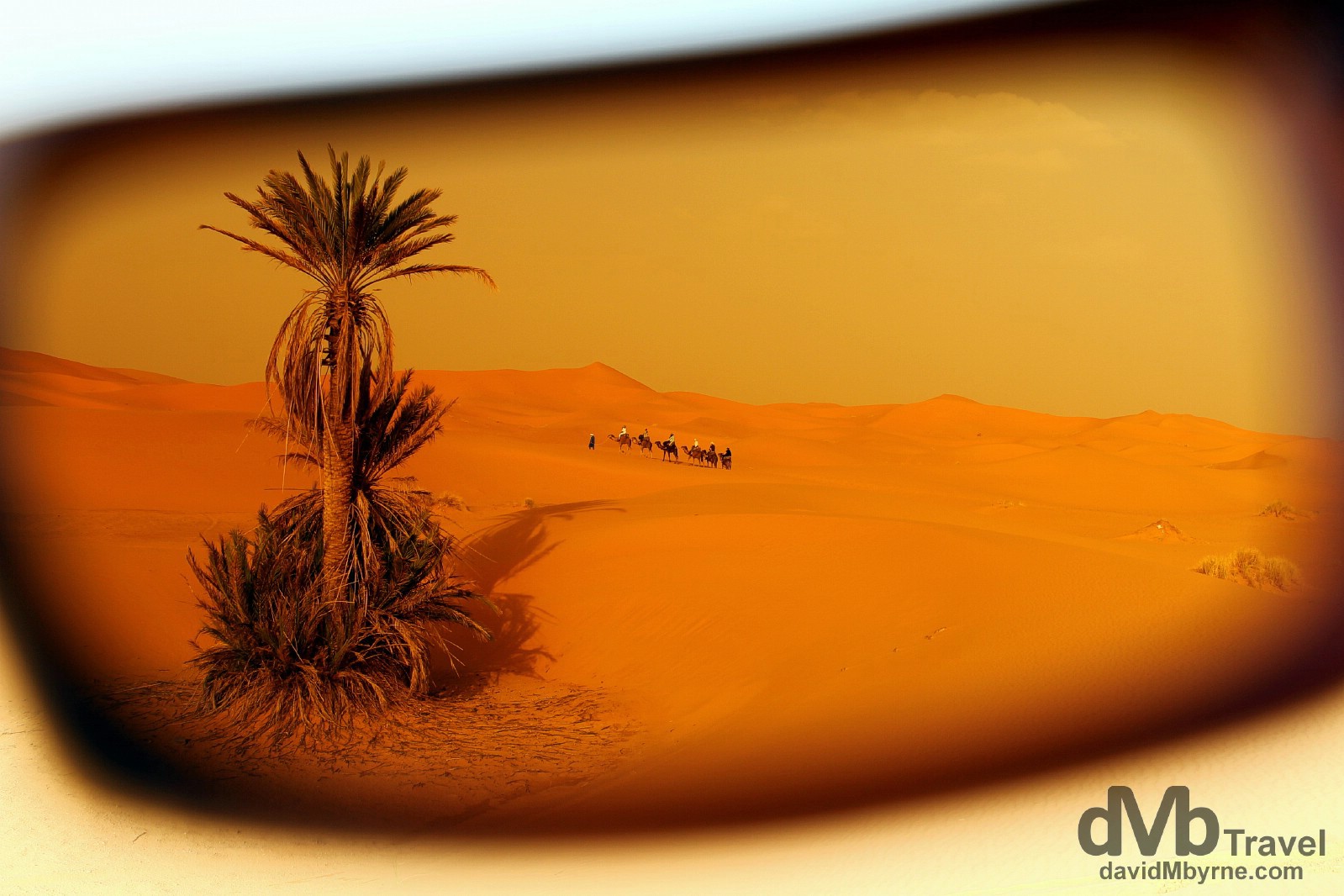
As seen through sunglasses, a camel train on the Erg Chebbi dunes near the village of Merzouga, southeastern Morocco. May 19, 2014.
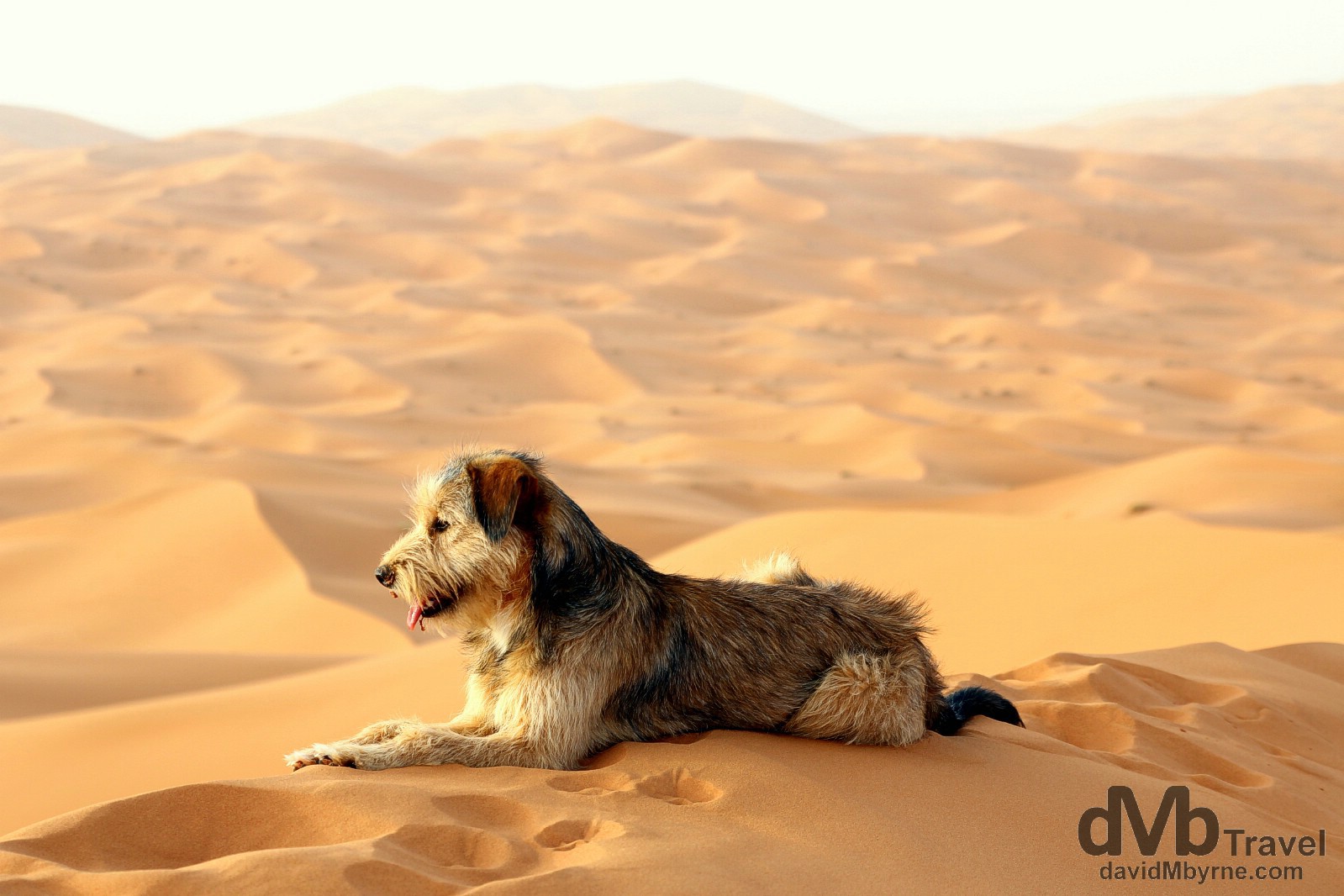
This shaggy fella befriended me and accompanied me on my walk across the Erg Chebbi sands towards what was easily the highest dune on the horizon – it looked &, especially when scrambling up its side, felt like a mountain. And once we got there I think the dog appreciated the views just as much as I did. Resting atop a massive sand dune in the sands of southern Erg Chebbi outside the village of Marzouga, southeastern Morocco. May 19, 2014.
I sat up high above the surrounding landscape as the last light of the day slowly disappeared. The shifting shadows on the warm desert landscape below me was a sight to behold.
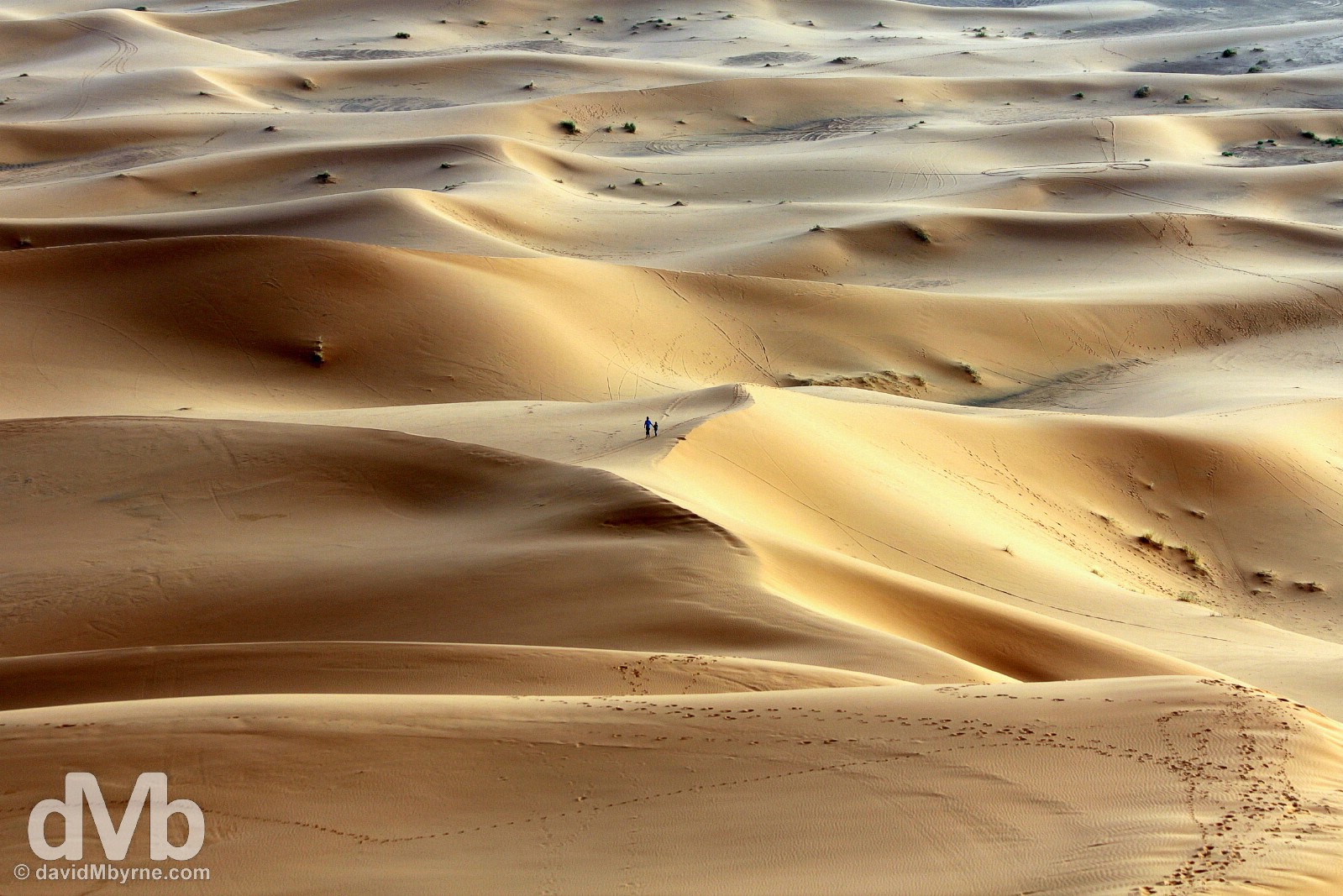
Walking on the sand dunes of southern Erg Chebbi nearing sunset outside the village of Merzouga, southeastern Morocco. May 19, 2014.
Loving the desert here in #Morocco Pics to follow. #travel #dmbtravel #travelphotography #merzouga
— davidMbyrne.com (@ByrneDavidM) May 19, 2014
Desert Day 3
Today, day 3 in the desert, started out nice enough but then things took a turn for the worse.
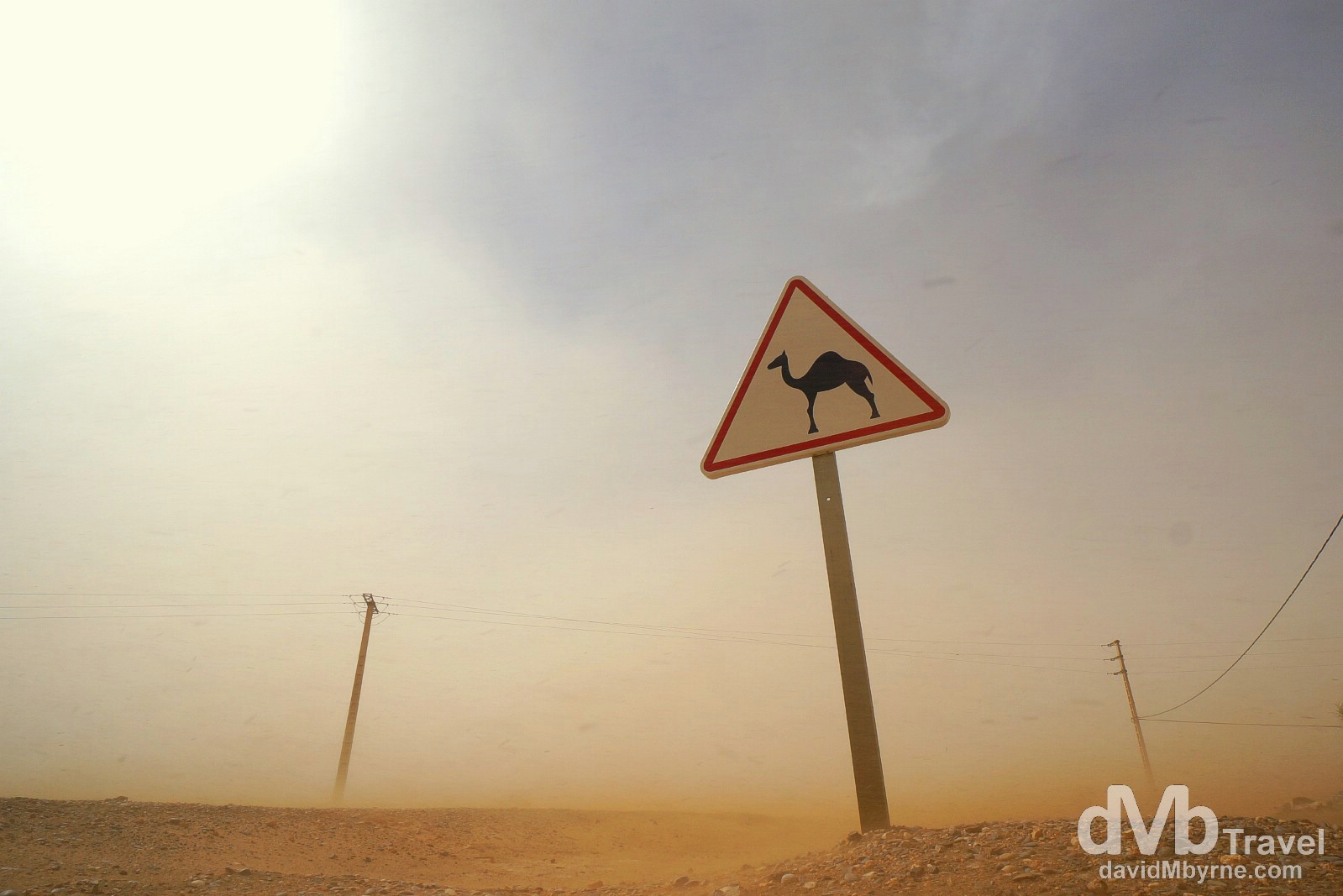
Sandstorm in the desert. It – the sand – gets everywhere; it gets in your nostrils, in your ears & you can even feel it grinding between your teeth. It was blustery, pretty intense. The Dacia was rocking. I shouldn’t have been out in this. My camera definitely shouldn’t have been out in this. But never miss an opportunity. It’s not every day you get to experience and photograph a sandstorm. Outside the blink-&-you’ll-miss-it village of Merzouga, southeastern Morocco. May 20, 2014.
Delayed Desert Departure
It’s almost 8 p.m. on day 3 among the Erg Chebbi sands. There’s not a lot happening right now. The sandstorm is still raging outside. There’s sand everywhere; the pool outside my Hotel Haven la Chance/Auberge La Chance room as seen better days. I didn’t get to gallivant among the dunes this evening. I’m not too happy about that. I had initially planned on leaving tomorrow but I’ll be sticking around for an extra day in the hopes that the conditions improve. Best get someone here to call Mohammad to square that with him; he’ll be expecting the Dacia back.
Desert Day 4
The sandstorm blew through. The clear skies of day 4 were a welcome sight to wake to. I had breakfast by the pool, did a bit of work and generally took it easy. I didn’t take my camera out much, deciding to give it a rest after subjecting it to the sandstorm of the previous day. I did take it out to get a quick capture of my room, once the maid had been & gone of course.
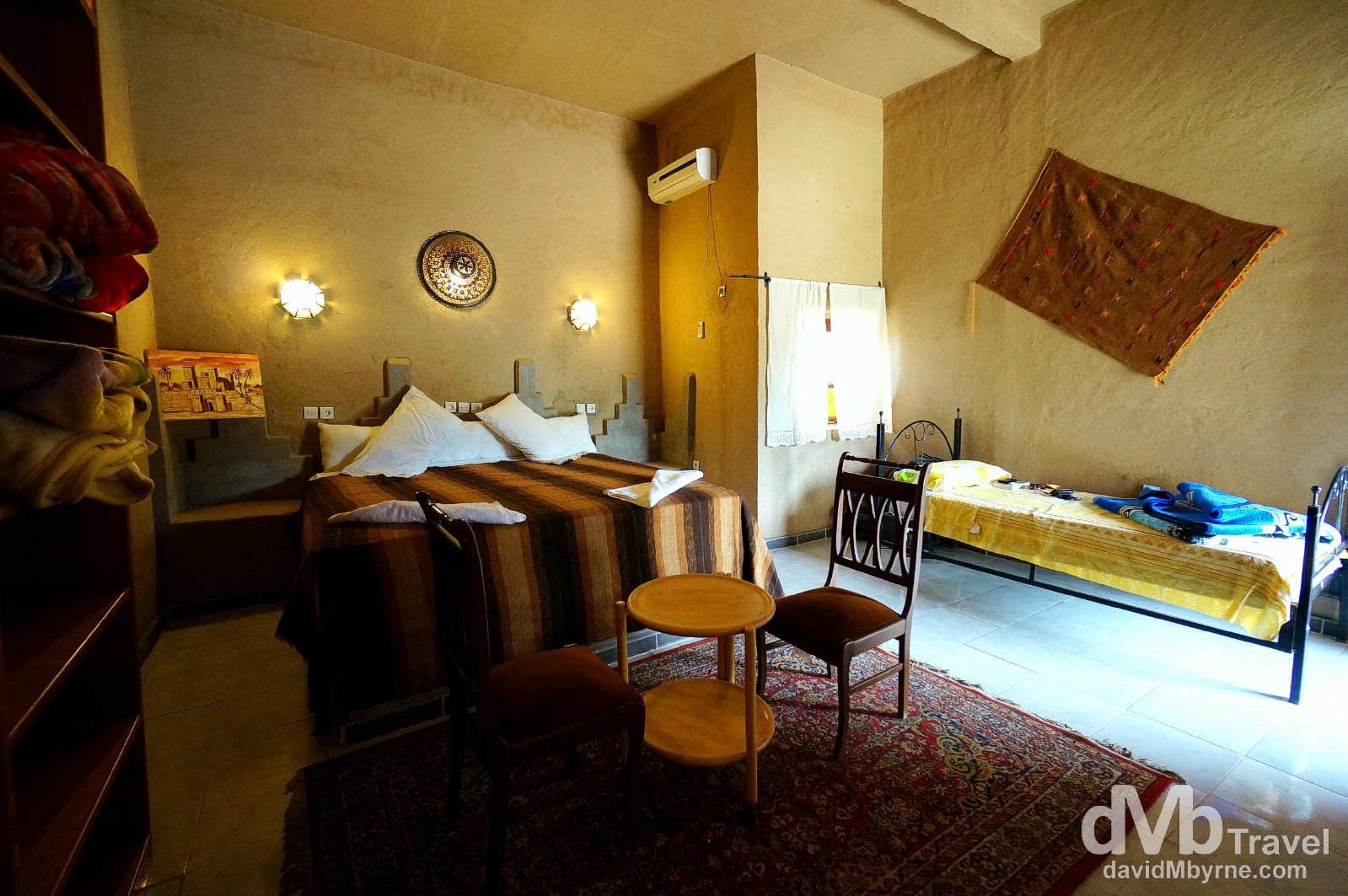
My court/poolside room Hotel Haven la Chance/Auberge La Chance. I’ll admit to not knowing a whole lot about traditional Berber decor but I’m assuming this room is decorated as such. On the outskirts of Merzouga, southeastern Morocco. May 21, 2014.
I got to amble among the dunes this evening. Again I sat on high lording over all around me, watching the shifting shadows creep across the dune contours, and eyeing far-off camel trains. I didn’t bring my camera. It was peaceful for the most past, that was until my iPod piped up to signal an internet connection, a Wi-Fi signal somehow reaching me far out among the vast dunes of southern Erg Chebbi.
Tweeting from the middle of the dunes of #merzouga #morocco at sunset. Dunno where the WiFi is coming from! #travel #dmbtravel #desert
— davidMbyrne.com (@ByrneDavidM) May 21, 2014
Desert Day 5
I finally let the desert today and I got the Dacia back to Mohammad in Er Rachidia, although only after completing a loop of the Circuit Touristique outside Rissani en route. But before I left Merzouga I had to say goodbye to this guy, number 2375.
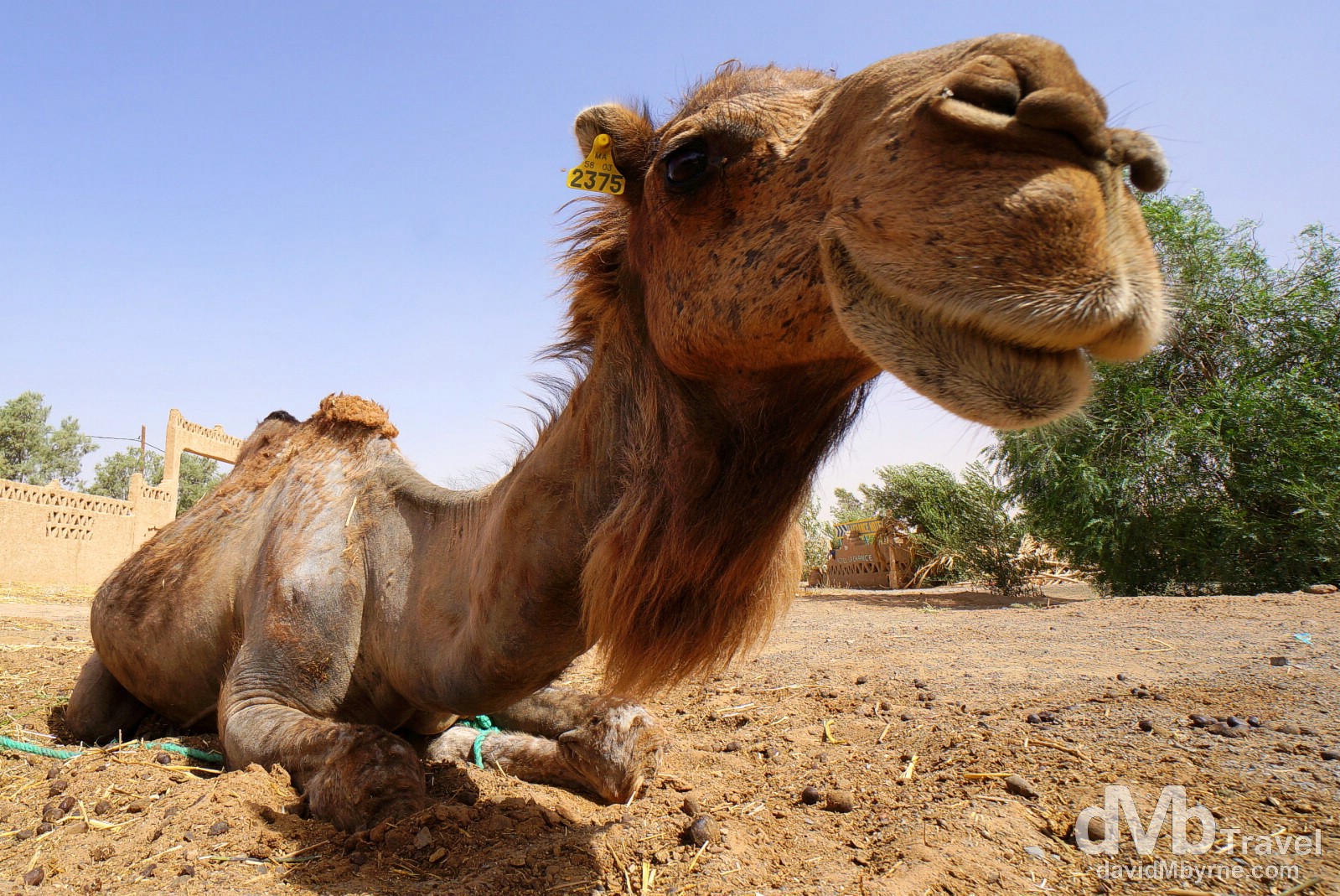
You have to get real close to a camel to get a shot like this with a wide-angle lens. This guy just stared at me inquisitively as I was doing my thing, the camera only inches from his snout. Although they have a reputation for being irascible, this particular dromedary just sat there seemingly without a care in the world, even though being an animal in Morocco does not come recommended. I love camels, which, on average, live to an age of 20-25; they are so comically placid, deliberate & gangly. In the grounds of Hotel Haven la Chance/Auberge La Chance on the outskirts of the village of Merzouga, southeastern Morocco. May 22, 2014.
– Reproduced from a panel ‘The Camel’ on display in the Dubai Museum, Dubai, UAE.
Damn Desert Dust
I enjoyed my time at the desert, enjoyed it immensely. But I’ll be the first to admit that sand, because it has a tendency to get everywhere, gets testing after a while. Of course the winds that whipped it up over the last few days didn’t help & I’m hoping the few buttons on my mirrorless camera that are having subtle difficulties depressing fully right now will free up over time.
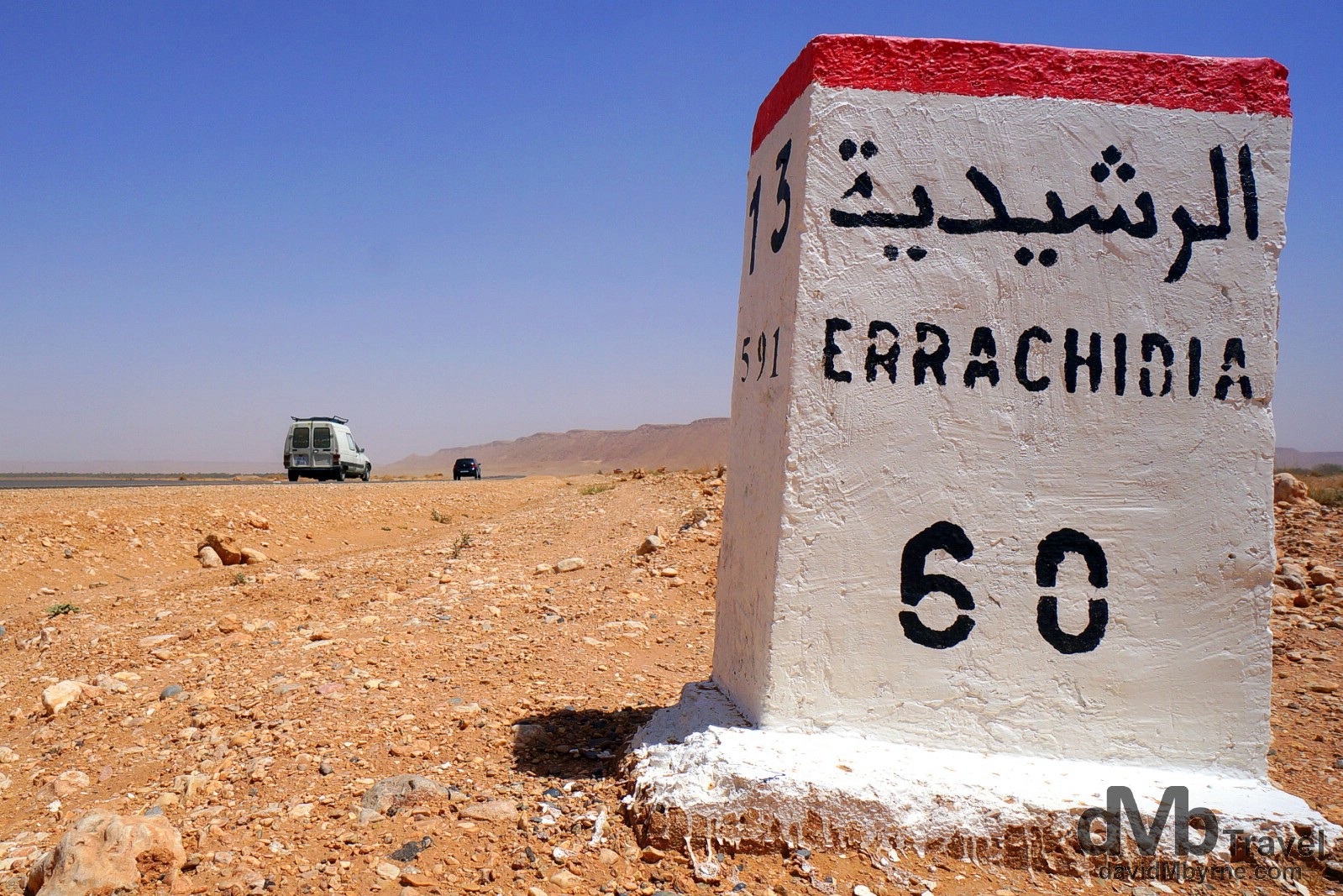
Half way there – 60 kilometres (of 398 total) to go. On the N13 en route from Merzouga, via Rissani, to Er Rachidia, southeastern Morocco. May 22, 2014.
So yes, Mohammad eventually got his car back in one piece, & compared to when I received he also got it back with more dust on the dash, more petrol in the tank, & 398 more kilometres on the clock.
